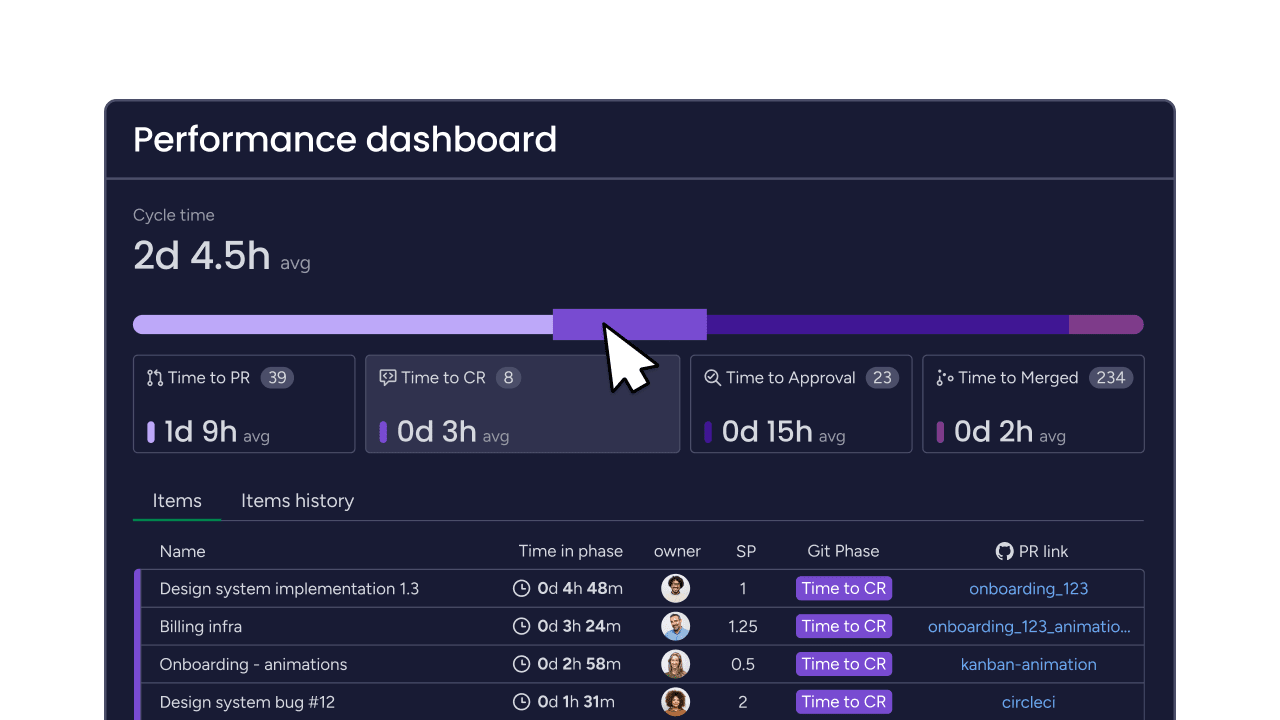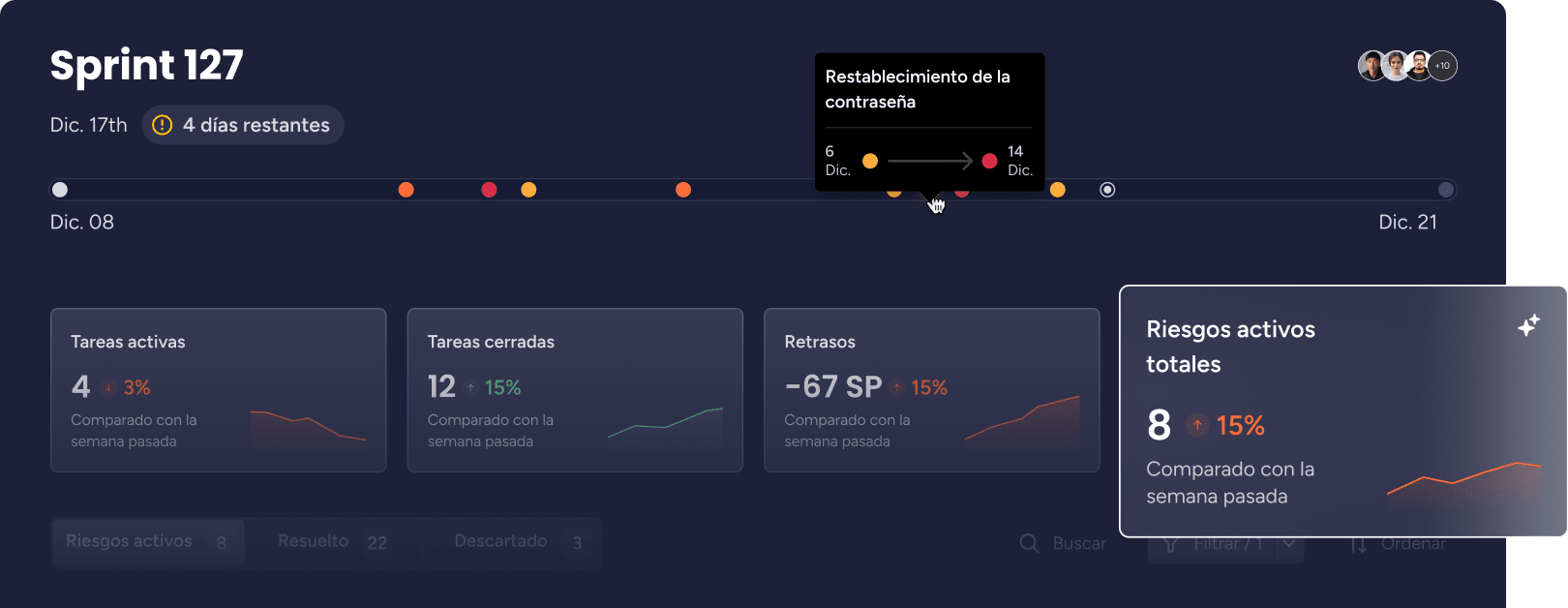Many development teams adopt Agile methods to ship faster but soon find themselves stuck. Work slows down, code quality drops, and the backlog grows despite high effort. The problem is rarely the team’s dedication; it is often a disconnect between their chosen process and the technical discipline required to sustain speed. This gap, where process meets engineering, is precisely what Extreme programming (XP) was designed to fill.
By focusing relentlessly on technical excellence and tight feedback loops, XP helps teams build confidence, align with business goals, and deliver high-quality software consistently. This article covers the methodology’s values and practices, shows you how to integrate XP with modern tooling, and explains the measurable business value it provides.
This comprehensive post breaks down the core principles of Extreme programming (XP). It explores its five foundational values and twelve essential practices, from pair programming to continuous integration. Readers will learn how XP compares to Scrum and Kanban, determine when it is the ideal fit for a project, and anticipate the common challenges during implementation.
Key takeaways
- Rapid delivery and quality: XP delivers working software every one to two weeks through practices like test-driven development and pair programming. This approach catches defects early and maintains tight alignment with customer needs.
- Integrated system: the 12 XP practices work as an integrated system; success comes from adopting core practices like continuous integration, refactoring, and collective code ownership together, not individually.
- Ideal context: XP works best for small to medium teams (2–12 developers) on projects with frequently changing requirements and high customer availability.
- Technical excellence focus: unlike other Agile methods that focus mainly on process, XP emphasizes technical excellence through specific coding practices, making it ideal for teams prioritizing code quality and sustainable development speed.
- Integration: platforms like monday dev provide the customizable boards, automated CI/CD integration, and velocity tracking necessary to support all XP workflows, adapting to your specific practices instead of forcing you to change how you work.

What is extreme programming (XP)?
Extreme programming (XP) is an agile software development methodology that emphasizes technical excellence, customer collaboration, and rapid feedback cycles. A study in the International Journal of Information System and Engineering found that XP excels in areas like defect rate reduction (25%) and cycle time performance (30%) compared to other agile methods. This means teams deliver high-quality software through disciplined practices like test-driven development, pair programming, and continuous integration — all while adapting quickly to changing requirements.
XP focuses on delivering working software frequently, often in one to two-week iterations. Teams write code, test it immediately, and release it to customers for feedback before moving to the next feature, following an Agile development process.
Understanding XP software development in 2026
XP differs from traditional development through its iterative software development process and emphasis on simplicity. Instead of lengthy requirements documents, teams use “user stories” — short descriptions of what customers need. Work happens in “iterations” (short development cycles), and teams deliver “releases” (working software) frequently.
The methodology embraces change as natural. When customers request new features or modifications, XP teams adapt quickly without disrupting their workflow.
How has extreme programming evolved?
Kent Beck created XP in the late 1990s while working on the Chrysler Comprehensive Compensation System. He saw traditional methods failing to deliver quality software on time, especially when requirements changed.
XP became one of the foundational Agile methodologies, influencing the Agile Manifesto in 2001. Today, teams worldwide use XP practices, adapting them to modern development environments while maintaining the core focus on technical excellence.
Why extreme programming works
XP delivers measurable business value through faster delivery, higher code quality, and improved team collaboration. The methodology creates a system where each practice reinforces the others, resulting in sustainable development speed.
Accelerated software delivery
XP’s short iterations enable teams to deliver working software every few weeks. By breaking work into small pieces and maintaining a releasable codebase, teams respond quickly to market opportunities.
The focus on simplicity prevents over-engineering. Teams build only what customers need now, avoiding speculative features that waste time and resources.
Superior code quality through XP practices
XP builds quality directly into the development process through three mutually reinforcing practices:
- Test-Driven Development (TDD): TDD ensures all code has comprehensive, upfront tests, providing substantial benefits through early defect detection, which catches bugs when they are cheapest to fix.
- Source Note: A study on the impact of TDD found it significantly reduces the cost and effort of fixing issues later.
- Pair programming: this practice provides continuous code review, with two developers working together to spot errors and inconsistencies immediately as the code is being written.
- Regular refactoring: continuous code structure improvement keeps the codebase clean and adaptable. This prevents technical debt from accumulating and slowing down future development..
Enhanced team collaboration
XP breaks down silos through collective code ownership, making it possible for any developer to work on any part of the system. Knowledge spreads throughout the team, eliminating bottlenecks when someone is unavailable. This approach is also vital for managing software teams effectively.
Daily communication and shared workspaces keep everyone aligned. Teams using monday dev can coordinate efforts in real-time, sharing updates and tracking progress together.
Rapid feedback cycles
Multiple feedback loops provide immediate insights. Continuous testing gives instant feedback on code quality, reflecting an Agile testing mindset. Frequent releases provide rapid customer feedback on functionality.
These mechanisms enable quick course corrections before small issues become major problems. Customer involvement throughout development ensures the final product meets actual needs.

The five core values of extreme programming
XP’s values guide all practices and decisions. Understanding these values helps teams make choices that align with XP principles and Agile principles, even when adapting practices to different contexts. These five interconnected values create an environment for delivering quality software:
- Communication: face-to-face conversations, shared understanding, and transparent information flow prevent misunderstandings and keep everyone working toward the same goals.
- Simplicity: doing the simplest thing that works reduces development time and maintenance costs while keeping the codebase manageable.
- Feedback: automated tests, customer reviews, and team retrospectives enable rapid adaptation and continuous improvement.
- Courage: teams make necessary changes, refactor code, and address technical debt, supported by comprehensive testing that provides a safety net.
- Respect: mutual respect creates a collaborative environment where different perspectives are valued and professional relationships thrive.
12 essential XP practices that drive success
XP’s practices work as an integrated system — implementing only a few yields limited results. These practices address planning, design, coding, and testing, creating a robust framework for quality software delivery. Here’s how they work together:
| Practice | Primary benefit | Implementation difficulty |
|---|---|---|
| Planning game | Realistic project timelines | Medium |
| Small releases | Reduced risk, frequent feedback | Medium |
| System metaphor | Shared understanding | Medium |
| Simple design | Lower complexity, easier maintenance | Medium |
| Test-first programming | Higher quality, improved design | High |
| Pair programming | Fewer defects, knowledge sharing | High |
| Collective code ownership | Eliminates bottlenecks | Medium |
| Continuous integration | Early problem detection | High |
| 40-hour week | Sustainable productivity | Low |
| On-site customer | Immediate feedback | Medium |
| Refactoring | Maintainable codebase | High |
| Coding standards | Consistent, readable code | Low |
1. Planning game
Customers and developers collaborate to define requirements and estimate effort. Customers write user stories describing desired functionality. Developers estimate the work required.
This ensures business priorities drive development while technical constraints inform realistic scheduling.
2. Small releases
Teams deliver working software every few weeks or months. Small releases reduce risk by validating assumptions early. If features don’t meet needs, teams adjust quickly without wasting resources.
3. System metaphor
A shared vocabulary helps everyone communicate about the system. For example, a web application might use a “storefront” metaphor with components like “display window” and “cash register”.
4. Simple design
Build only what’s needed for current requirements. This approach prevents speculative over-engineering and keeps the codebase manageable. By resisting the urge to build features for future requirements, teams reduce implementation time, minimize complexity, and maintain a high-quality structure that can be easily adapted later without sacrificing quality.
5. Test-first programming
Write tests before code. This ensures comprehensive test coverage and drives modular, testable designs. monday dev integrates with testing frameworks to track results and maintain quality visibility.
6. Pair programming
Two developers work at one computer, one writes while the other reviews. This practice ensures that errors and design flaws are caught immediately, often as the code is being typed. Crucially, pair programming efficiently spreads critical knowledge and technical expertise throughout the entire development team.
7. Collective code ownership
Any team member can modify any code. This eliminates critical bottlenecks by ensuring knowledge distribution across the entire team. As a result, the project’s progress is resilient and never dependent on a single individual’s availability.
8. Continuous integration
Integrate code changes multiple times daily. This rapid, automated process ensures that automated tests catch problems immediately while the changes are fresh in developers’ minds. Frequent integration is the core mechanism that keeps the codebase stable and prevents major integration issues from arising late in the cycle.
9. 40-hour week
Sustainable work practices prevent burnout. Well-rested developers consistently produce higher-quality code with significantly fewer errors. This rule is a foundational policy that ensures productivity is maintained at a high, healthy level throughout the entire life of the project.
10. On-site customer
Customer representatives provide immediate feedback and clarify requirements. This prevents delays and ensures the product meets actual needs.
11. Refactoring
Continuously improve code structure without changing functionality. This maintains the team’s ability to add features quickly throughout the project.
12. Coding standards
Consistent conventions make code readable for all team members. This close collaboration prevents delays caused by waiting for external approvals and eliminates misunderstandings about functionality. Continuous customer involvement ensures that the final product consistently meets actual business needs.

When to implement extreme programming
Extreme Programming (XP) isn’t a one-size-fits-all approach. It delivers the most value in environments that embrace change, prioritize collaboration, and support continuous feedback. Knowing when these conditions exist helps determine whether XP is the right fit for your team and project.
The following sections outline the types of projects, team setups, and business environments where XP thrives — and where it might not.
Ideal projects for XP methodology
XP thrives in specific project contexts where its practices maximize value.
- Changing requirements: XP works best for projects where customer needs and scope evolve throughout development. The methodology suits innovative products or markets where requirements cannot be fully defined upfront, aligning closely with principles of rapid application development.
- High-quality focus: projects requiring high-quality, adaptable code benefit significantly from XP’s dedicated testing and refactoring practices.
- Complex problem domains: complex problem domains align well with XP’s iterative approach, allowing teams to discover and validate solutions through rapid prototyping and continuous customer collaboration.
Team size and structure considerations
Small to medium teams (up to developers) implement XP most effectively. Larger teams struggle to maintain the close collaboration XP requires.
Co-located teams easily implement pair programming and face-to-face communication. Distributed teams can adapt using modern platforms like monday dev, which provides shared workspaces and real-time collaboration features.
Business environment alignment
XP needs management support for agile practices and investment in technical excellence. Leadership must understand that quality and sustainability may require different metrics than traditional approaches.
Customer availability is crucial. Organizations where customers participate actively see greater benefits than those with limited customer involvement.
XP vs other Agile methodologies
Extreme Programming shares the same Agile foundation as Scrum and Kanban, but it stands out through its deep focus on engineering excellence. While Scrum centers on project organization and Kanban optimizes flow, XP dives into how code gets written, tested, and delivered.
Understanding these differences helps teams combine methods effectively — using each where it excels to build faster, higher-quality software. The table below highlights how XP compares across key dimensions.
| Dimension | XP | Scrum | Kanban |
|---|---|---|---|
| Team structure | Collaborative, fluid | Defined roles | Flexible, minimal roles |
| Planning | Iterative, customer-driven | Sprint-based | Continuous flow |
| Technical practices | Embraces through practices | Less prescriptive | Not specified |
| Change management | Strong emphasis | Manages through sprints | Adapts through flow |
| Customer involvement | Continuous, on-site | Through product owner | Variable |
Extreme programming vs Scrum
This comparison highlights the difference between a process framework and a technical discipline.
- XP: emphasizes technical practices (coding, testing).
- Scrum: focuses on project management (sprints, roles).
XP provides specific coding guidance; Scrum organizes work and communication. Teams often combine both, Scrum for project structure, XP for technical practices, to leverage Agile best practices effectively.
XP vs Kanban
This section clarifies the trade-off between the structured cadence of XP and the continuous flow of Kanban.
- XP: uses structured iterations and prescribed practices.
- Kanban: focuses on continuous flow and Work-In-Progress (WIP) limits.
Kanban is process-focused and less prescriptive on engineering practices than XP. Some teams combine XP’s technical practices for quality with Kanban flow management for visualizing work.
Integrating XP with DevOps
XP practices (Continuous Integration, automated testing) align naturally with DevOps principles for rapid, reliable delivery. Modern XP incorporates infrastructure as code and continuous monitoring.
Solutions like monday dev connect to CI/CD pipelines, enabling teams to track development and operational metrics together.

Key roles in XP Agile teams
XP roles emphasize collaboration over hierarchy. Understanding these fluid roles helps teams organize effectively while maintaining flexibility.
- The Customer representative: defines requirements, sets priorities, and provides continuous feedback. The representative must understand business needs and be readily available to make decisions without lengthy approval processes.
- The XP Developer: is responsible for coding, testing, design, and planning. The developer actively practices pair programming , writes tests, and maintains standards. This role requires strong technical skills, the ability to communicate with all team members, and the flexibility to embrace rapid feedback and continuous change.
- The XP Coach: helps teams adopt practices and maintain discipline throughout the project. The coach provides guidance on advanced practices like test-driven development and pair programming implementation. This role is particularly important for new teams, sharing knowledge and helping them avoid common implementation pitfalls.
- The Tracker: monitors progress, identifies bottlenecks, and facilitates improvements. The tracker collects and analyzes key metrics on development velocity, code quality, and performance trends. Platforms like monday dev are essential here, as their analytics features support this role by automatically collecting and visualizing team metrics.
The extreme programming development lifecycle
Extreme Programming structures work around short, repeatable cycles that keep teams focused on immediate delivery while staying aligned with long-term goals. Its lifecycle blends daily collaboration, iterative improvement, and strategic planning into a continuous flow of feedback and refinement.
The sections below break down how XP teams plan, deliver, and release software through weekly iterations, quarterly planning, and continuous deployment practices.
Weekly iteration cycles
Teams organize work into one to two-week iterations. Each begins with planning and story selection.
Daily stand-ups coordinate work. Pair programming, testing, and integration happen continuously. Iterations end with reviews and retrospectives for continuous improvement.
Quarterly release planning
Release planning aligns efforts with business goals every three to six months. Teams review backlogs, estimate features, and create roadmaps.
This balances customer requests with technical needs like refactoring. It communicates progress to stakeholders not involved daily.
Continuous deployment strategies
Frequent releases and automated testing enable continuous deployment. Code changes deploy automatically after passing tests.
This requires robust testing, monitoring, and rollback capabilities. monday dev integrates with deployment pipelines for unified development and operational visibility.

Mastering XP implementation challenges
Teams face obstacles related to culture, skills, and expectations. Understanding challenges and solutions increases implementation success. What challenges might your organization face when adopting XP practices?
Scaling XP for enterprise teams
Large organizations coordinate multiple teams through shared standards and architectural alignment to maintain consistency. Communities of practice and shared tooling help teams integrate work effectively.
Advanced solutions like monday dev provide portfolio visibility while allowing team customization.
Adapting XP for distributed development
Remote teams maintain XP practices through strong communication platforms and clear protocols. Video conferencing and shared environments enable collaboration.
The key is maintaining close communication despite physical separation. This may require structured practices and digital collaboration platforms.
Securing stakeholder buy-in
Demonstrate value through pilot projects and measurable outcomes. Explain how practices like pair programming contribute to long-term productivity.
Success stories, quality metrics, and clear business benefits build stakeholder confidence in XP methodology.
Accelerate your XP journey with monday dev
Intuitive solutions like monday dev provide the flexible base XP teams need for effective practice implementation. The platform adapts to XP workflows rather than forcing teams to change practices, offering purpose-built features that support extreme programming’s core values.
Visualizing XP workflows and progress
Customizable boards track user stories, iterations, and releases with complete flexibility. Use Kanban, timeline, or Gantt views to focus on different work aspects while maintaining full visibility across your XP cycles.
The hierarchy view shows relationships between epics, user stories, and individual work items, making dependencies clear at a glance. Automated updates reduce administrative overhead while keeping stakeholders informed through real-time status changes and progress tracking.
Automating continuous integration pipelines
Built-in automation triggers builds, tests, and deployments for seamless continuous integration. Teams receive instant notifications when builds fail or deployments complete, enabling rapid response to integration issues.
Native integrations with GitHub, GitLab, Bitbucket, and Jenkins connect your existing CI/CD pipelines while adding project management visibility. Track code commits, pull requests, and deployment status directly within your sprint boards.
Tracking team velocity and metrics
Advanced reporting features measure velocity, identify bottlenecks, and surface performance trends. Track story points completed, cycle times, sprint burndown, and cumulative flow for data-driven improvements.
Custom dashboards aggregate metrics across multiple teams and projects, supporting continuous improvement and the tracker role. Real-time widgets display velocity trends, bug rates, and test coverage to maintain focus on technical excellence.
Coordinating pair programming sessions
Schedule and track pair programming sessions using time tracking and workload views to ensure knowledge-sharing goals are met. Document which code areas have been paired on to support collective ownership and identify knowledge gaps.
Integration with development environments like VS Code and IntelliJ provides context about pair programming’s impact on code quality. Link commits and pull requests to pairing sessions to measure the correlation between collaboration and defect rates.
Frequently asked questions
How long does it take to implement extreme programming successfully?
The time it takes to implement extreme programming successfully is typically 3-6 months for teams to become proficient with core practices. Basic practices like daily stand-ups and short iterations can be adopted within weeks. The timeline depends on team experience, organizational support, and existing system complexity.
Can extreme programming work without pair programming?
Yes, extreme programming can work without pair programming, though you lose significant quality and knowledge-sharing benefits. Alternative approaches include code reviews, mob programming, and other collaboration methods. These achieve similar goals but may not be as effective as continuous pair programming.
What makes extreme programming different from other agile methodologies?
Extreme programming's focus on technical practices like test-driven development and refactoring distinguishes it from process-focused approaches. While Scrum emphasizes project management, XP provides specific guidance on writing, testing, and maintaining high-quality code while adapting to change.
Is extreme programming suitable for large enterprise projects?
Extreme programming can scale to larger projects through team coordination and architectural planning. It works best with smaller, focused teams of two to twelve developers. Large enterprises implement XP across multiple coordinated teams while maintaining technical excellence and customer collaboration.
What types of projects benefit most from extreme programming?
Projects with changing requirements, quality-critical applications, and collaborative customers benefit most from extreme programming. The methodology suits innovative products and complex problem domains where requirements can't be fully defined upfront. XP's iterative approach helps teams discover solutions through experimentation.
How does extreme programming handle changing requirements?
Extreme programming embraces change through short iterations and continuous customer feedback. Simple design, refactoring, and comprehensive testing enable quick modifications without compromising quality. Change becomes a natural part of development rather than a disruptive force.
 Get started
Get started 


